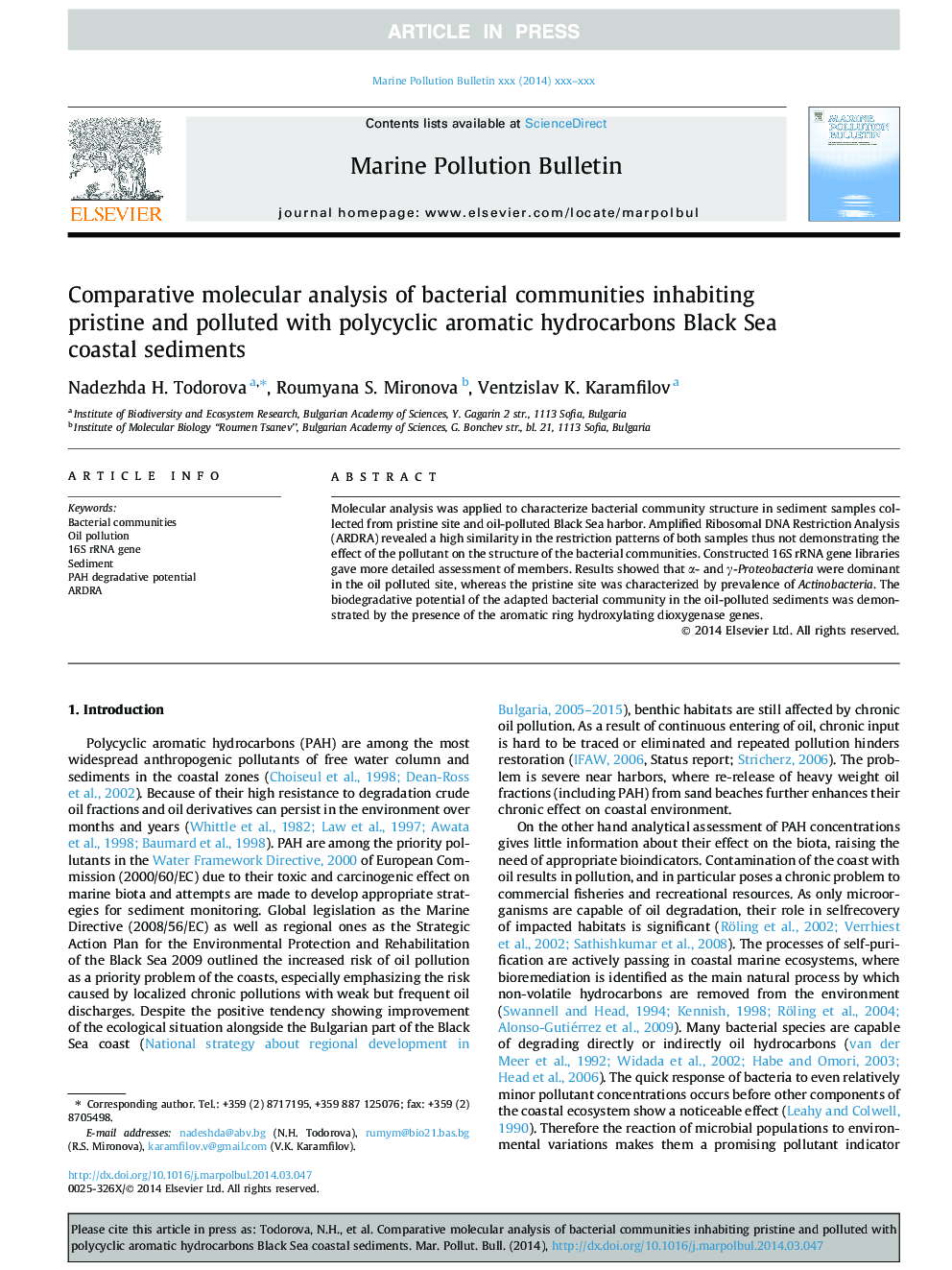| Article ID | Journal | Published Year | Pages | File Type |
|---|---|---|---|---|
| 6358780 | Marine Pollution Bulletin | 2014 | 10 Pages |
Abstract
Molecular analysis was applied to characterize bacterial community structure in sediment samples collected from pristine site and oil-polluted Black Sea harbor. Amplified Ribosomal DNA Restriction Analysis (ARDRA) revealed a high similarity in the restriction patterns of both samples thus not demonstrating the effect of the pollutant on the structure of the bacterial communities. Constructed 16S rRNA gene libraries gave more detailed assessment of members. Results showed that α- and γ-Proteobacteria were dominant in the oil polluted site, whereas the pristine site was characterized by prevalence of Actinobacteria. The biodegradative potential of the adapted bacterial community in the oil-polluted sediments was demonstrated by the presence of the aromatic ring hydroxylating dioxygenase genes.
Related Topics
Physical Sciences and Engineering
Earth and Planetary Sciences
Oceanography
Authors
Nadezhda H. Todorova, Roumyana S. Mironova, Ventzislav K. Karamfilov,
